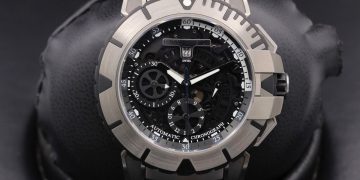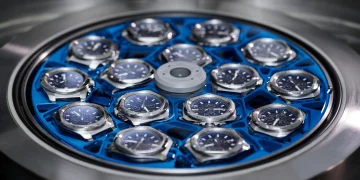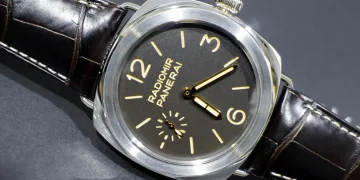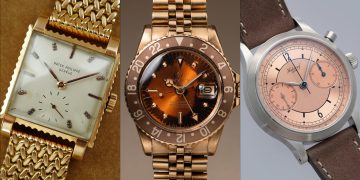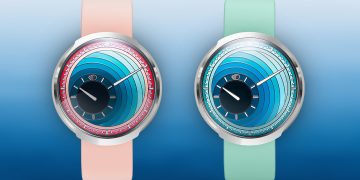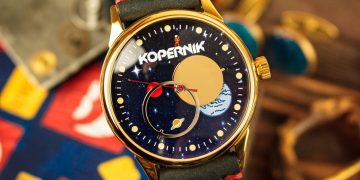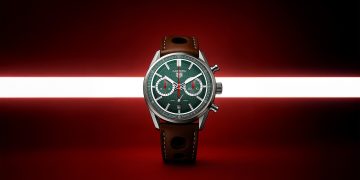Introduction:
The world of watchmaking is one of the most celebrated fields for craftsmanship, where heritage, artistry, and precision meet. Traditional watchmaking methods, passed down through generations, have defined the watch industry for centuries. These methods rely heavily on skillful human hands and meticulous attention to detail, producing timepieces that are as much a piece of art as they are functional instruments.
However, as we enter the 21st century, the influence of modern technology on virtually every industry has become undeniable. In the watchmaking world, innovations such as automated production, smart features, and cutting-edge materials are changing the way watches are designed and manufactured. So, the question arises: Can traditional watchmaking craftsmanship and modern technology truly be perfectly combined?
In this article, we will explore whether the age-old techniques used by watchmakers can coexist with and benefit from the advancements brought about by modern technology, and how these two worlds are coming together to shape the future of horology.
1. The Charm of Traditional Watchmaking
Traditional watchmaking is rooted in a deep respect for craftsmanship and artistry. For centuries, horologists have used a combination of handcraftsmanship and meticulous processes to produce watches with unparalleled precision.
1.1 The Art of Handcraftsmanship
At the heart of traditional watchmaking is the human touch. Master watchmakers spend years learning the intricacies of creating mechanical movements, carefully assembling tiny gears, springs, and levers by hand. Watches like the Patek Philippe Grand Complications or the Vacheron Constantin Traditionnelle collections are prime examples of how decades or even centuries of experience can produce timepieces that showcase the highest level of horological expertise.
These watches are often appreciated not only for their technical precision but also for the unique craftsmanship imbued into each piece. The hand-finishing techniques, like anglage (polishing the edges of parts), Côtes de Genève (Geneva stripes), and perlage (a fine, circular decoration), are examples of the artistry involved in traditional watchmaking. These fine touches are often impossible to replicate with machines and are seen as hallmarks of fine craftsmanship.
1.2 Manual Movements and Mechanical Excellence
Traditional watches often rely on manual mechanical movements, where intricate movements are powered by a series of gears and springs, all assembled by hand. Tourbillons, chronographs, and minute repeaters are examples of mechanical features that showcase the technical prowess of the human watchmaker. These complications are designed to improve accuracy or provide extra functionalities, and they often require significant expertise and skill to assemble.
For many watch enthusiasts, the appeal of mechanical watches lies in their timeless appeal and self-contained engineering—the beauty of seeing a movement function mechanically, without relying on external power sources like batteries or motors, is a testament to the ingenuity of traditional horology.
2. The Rise of Modern Technology in Watchmaking
Modern technology has revolutionized the way watches are produced, introducing new materials, faster manufacturing processes, and smart technology that can enhance a watch’s functionality. Brands like Apple with their Apple Watch, or Garmin and Fitbit, have ushered in an era of smartwatches that combine digital interfaces with fitness tracking, heart-rate monitoring, and even mobile connectivity. But how can traditional watchmaking techniques coexist with these technological innovations?
2.1 Advancements in Materials
One of the key areas where modern technology has made a significant impact is in the materials used in watchmaking. While traditional watches were primarily crafted from stainless steel, gold, or platinum, modern technology has enabled the use of titanium, ceramics, and carbon fiber—materials that offer greater strength, lighter weight, and enhanced durability.
For example, brands like Omega and AP have incorporated Ceramic cases into their watches, which provide a sleek, scratch-resistant surface. Titanium, with its lightweight properties, has become increasingly popular for high-performance sports watches, like those from Seiko and Citizen. These materials are often harder to work with than traditional metals, but modern technology allows manufacturers to process them efficiently while maintaining high-quality finishes.
2.2 Precision Manufacturing and Automation
Modern technology has also drastically improved the precision of manufacturing. Computer Numerical Control (CNC) machines, laser cutting, and 3D printing have made it possible to produce parts with microscopic accuracy. These automated processes help to reduce human error and speed up production, which is particularly useful for creating smaller, more intricate components of modern movements.
While some may argue that CNC machines and 3D printing diminish the artisanal touch of traditional horology, these technologies can be used to complement traditional craftsmanship. The combination of manual expertise and automated precision can ensure that watch parts are crafted with an extreme level of accuracy, leading to a new era of high-performance, precise timepieces.
2.3 The Rise of Smart Technology and Hybrid Watches
Perhaps the most disruptive influence of modern technology in the watchmaking industry is the rise of smartwatches. These digital devices do much more than tell time—they track fitness metrics, allow for app downloads, provide notifications, and even measure vital health statistics. The development of smartwatches has pushed traditional brands to explore the integration of technology with their heritage.
Some luxury watchmakers have introduced hybrid models that combine mechanical movements with smart functionalities. For example, the Tag Heuer Connected series or Garmin’s Fenix watches combine the best of both worlds: the precision and craftsmanship of mechanical watches with modern, practical smart features. These watches offer traditional analog dials alongside digital displays for tracking fitness data, alerts, or even the time in different time zones.

3. Combining Tradition with Technology: A Harmonious Fusion
Can traditional craftsmanship and modern technology coexist? The answer is yes, and in many ways, they complement one another. The fusion of the two represents the future of horology, where traditional techniques uphold the aesthetic and mechanical integrity of a timepiece, while modern technologies enhance functionality and precision.
3.1 Enhanced Craftsmanship with Modern Tools
Rather than replacing traditional craftsmanship, modern tools and technologies can enhance the work of watchmakers. 3D printing, for example, can create intricate prototypes for parts before they are hand-finished, allowing watchmakers to focus on the art of the design and finish. CNC machines can also be used to create components that are then meticulously polished, engraved, and assembled by hand, combining the precision of technology with the personal touch of craftsmanship.
3.2 Innovation in Movement Technology
On the mechanical side, modern movement technology has also brought about innovations that make traditional watchmaking more precise and reliable. For example, the introduction of silicon escapements in watches by brands like Jaeger-LeCoultre and Omega has improved accuracy and reduced wear and tear on the mechanical components. This is a prime example of how modern materials can enhance traditional movements without compromising the watch’s heritage.
Additionally, quartz technology, which revolutionized the industry in the 1970s, still plays a significant role in watchmaking today. Brands like Seiko have perfected the quartz movement, which provides accurate timekeeping and a lower price point, but still respects the traditional principles of timekeeping.
4. Challenges and Tensions in Combining Both Worlds
Despite the obvious benefits, there are challenges in combining traditional craftsmanship with modern technology. One of the primary concerns for some watch enthusiasts and collectors is that the introduction of automation and smart technology could erode the value of traditional artistry. The reliance on machines rather than skilled labor can be seen as a threat to the authenticity and exclusivity that come with handcrafted pieces.
For others, the beauty of traditional watchmaking lies precisely in the human element—the hours spent by artisans in hand-finishing each component. The human touch is something that cannot be replicated by machines, and for many collectors, the knowledge that a watch was crafted by skilled hands adds immeasurable value to the timepiece.
5. Conclusion: A Future of Synergy Between Tradition and Technology
In conclusion, the combination of traditional craftsmanship and modern technology in watchmaking is not just possible—it is the future of horology. Both worlds can coexist, with modern tools and innovations enhancing the artistry and precision of timepieces, while still respecting the legacy and heritage of traditional watchmaking.
By embracing technology, the watchmaking industry can continue to evolve, offering more innovative, precise, and functional timepieces, while still preserving the artistry, craftsmanship, and heritage that make traditional watches so revered. As long as the core values of watchmaking—precision, durability, and artistry—are maintained, the blend of these two worlds promises an exciting future for horology.



